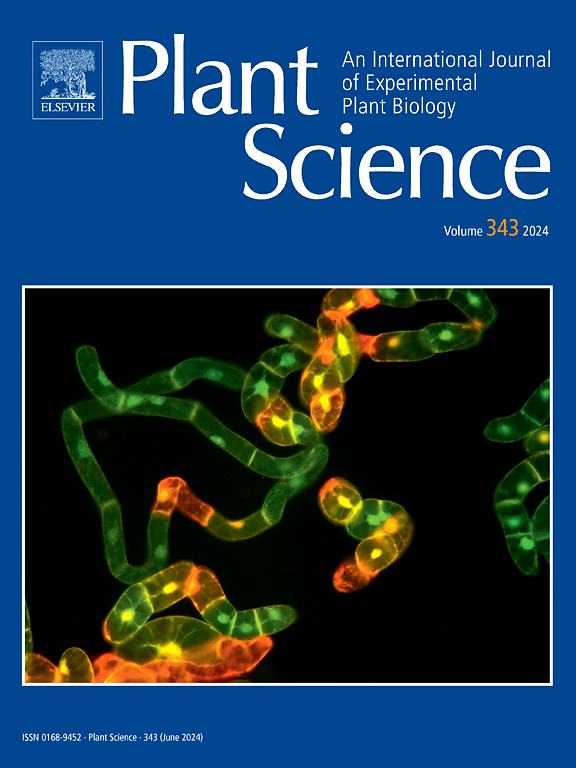Monocot-like leaf structure and trichome-water relations in early growth stages of the C3 plant sand rice (Agriophyllum squarrosum)
IF 4.2
2区 生物学
Q2 BIOCHEMISTRY & MOLECULAR BIOLOGY
引用次数: 0
Abstract
Sand rice (Agriophyllum squarrosum (L.) Moq.), a species of Amaranthaceae sensu lato, is an annual psammophyte found mainly on sand dunes in arid and semi-arid regions of Central Asia. Trichomes on the leaf surface are a key adaptive feature of sand rice, however, their ecophysiological functions remain to be elucidated. In this study, the anatomical analysis of a leaf reveals that the foliage is characterized by its isobilateral and amphistomatic nature. Together with an average δ13C value of −28.57 ‰, these findings indicate that sand rice is a C3 plant. Utilizing a trichome-defective mutant (Agriophyllum squarrosum trichomeless1, astcl1) identified from an EMS mutagenesis library by our group, alongside the wild type Shapotou (SPT), we observed that both epidermal surfaces on SPT leaves exhibit dense and dendritic trichomes, forming rough leaf boundary layers. Chlorophyll leaching analysis revealed that SPT has a higher epidermal permeability, with 86.32 % of chlorophylls leaching out within 30 minutes, compared to only 24.18 % for astcl1. The astcl1 leaf displayed a higher leaf wettability, lower water loss, and thicker cuticle compared to SPT leaves, which may be associated with trichomes serving as the primary pathway for nonstomatal water movement. This is supported by the observation that toluidine blue staining is more intense in trichomes than in pavement cells. Our findings reveal that the correlation between trichomes and the cuticle appears to be a critical factor in managing water loss and overall plant hydration, highlighting the significant role of trichomes in the adaptation of sand rice to desert environments.
求助全文
约1分钟内获得全文
求助全文
来源期刊

Plant Science
生物-生化与分子生物学
CiteScore
9.10
自引率
1.90%
发文量
322
审稿时长
33 days
期刊介绍:
Plant Science will publish in the minimum of time, research manuscripts as well as commissioned reviews and commentaries recommended by its referees in all areas of experimental plant biology with emphasis in the broad areas of genomics, proteomics, biochemistry (including enzymology), physiology, cell biology, development, genetics, functional plant breeding, systems biology and the interaction of plants with the environment.
Manuscripts for full consideration should be written concisely and essentially as a final report. The main criterion for publication is that the manuscript must contain original and significant insights that lead to a better understanding of fundamental plant biology. Papers centering on plant cell culture should be of interest to a wide audience and methods employed result in a substantial improvement over existing established techniques and approaches. Methods papers are welcome only when the technique(s) described is novel or provides a major advancement of established protocols.
 求助内容:
求助内容: 应助结果提醒方式:
应助结果提醒方式:


